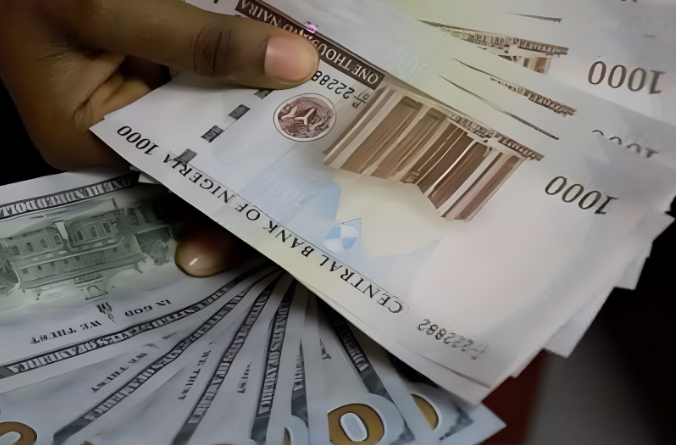 There are indications that another round of Naira depreciation has set in following renewed demand pressure amidst widening supply gap.
There are indications that another round of Naira depreciation has set in following renewed demand pressure amidst widening supply gap.
The Naira yesterday depreciated to N1,635 per dollar in the parallel market from N1,625 per dollar last weekend.
However, data from FMDQ Exchange showed that the indicative exchange rate for Nigerian Autonomous Foreign Exchange Market, NAFEM, fell to N1,585.77 per dollar from N1,598.56 per dollar last weekend.
Consequently, the margin between the parallel market and NAFEM rate widened to N49.23 per dollar from N26.44 per dollar last weekend.
The renewed pressure on exchange rate in the parallel market, according to dealers, was due to decline in dollar supply at the official end of the market mirrored by NAFEM.
Vanguard findings show that volume of dollars traded (turnover) in the market declined by 58.8 percent yesterday to $71.18 million from $172.8 million traded last week Friday.
Month-on-month (MoM ) the volume fell 25 percent to $3.25 billion in August from $4.34 billion in July 2024.
Parallel market operat ors said the exchange rate rose yesterday due to increased demand but that they did not receive a corresponding increase in supply.
At the backdrop of the supply gap Vanguard findings show that Nigeria’s foreign reserves dropped lost $490 million during the review period.
Data from the CBN foreign exchange reserve showed that the reserve fell by 1.3 percent MoM to $36.3 billion as at 28th of August from $36.79 billion as at July 31st, 2024.
Analysts in the financial sector had attributed the decline to CBN’s intervention in the FX market in an effort to stabilise the Naira.
However, in their monthly market report for August, analysts at Afrinvest West Africa Limited, a Lagos based investment house, said they expect the naira to depreciate against the dollar due to a peak in Business Travel Allowances, PTAs and Business Travel Allowances, BTAs.
They stated: “In the absence of significant inflow to boost FX supply, we expect the naira to be pressured in the month, due to the seasonality effect, as PTAs and BTAs demand peaks.”

